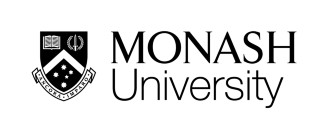Elizabeth Croft has been Dean of Engineering at Monash University in Melbourne, Australia, since January 2018. Previously, she was Senior Associate Dean at the Faculty of Applied Science at the University of British Columbia, Canada. She has a PhD in mechanical engineering from the University of Toronto. A globally recognized expert in human–robot interaction, Croft has led large-scale collaborative research projects into robots working alongside people in manufacturing, and has forged multidisciplinary initiatives with General Motors, the DLR (German Aerospace Center) and other industry partners. Croft has also been a driver of advancing women’s participation in engineering.

What makes robotics such an exciting area?
The future of society will be shaped to a large degree by the robotic systems we design. Robotics brings data and artificial intelligence into the physical world. The interaction between humans and the robotic systems that are empowered by all our data will change everything. It will alter how we live. Robots are new ontological beings — neither humans nor toasters, but something in between. Helping engineer how they will integrate into society is fascinating work. It’s already happening, and as these systems proliferate, getting it right will become increasingly important.
You said three years ago that robots would be in our homes in about a decade. Is that forecast still on track?
I think it might even be faster. Ten years ago, the technological challenges that still needed to be overcome gave me pause; but things have progressed quickly, particularly on the computational side. Advances in battery technology now allow robots to operate longer. And Wi-Fi communication speeds keep improving, which is critical, as more and more devices have embedded communications. The thin edge of the wedge is already here: we have the Roomba; we have the self-driving car; we have devices that make up the Internet of Things. You may not realize it, but your fridge and stove may already be robots.
What kind of impact do you envision robots having in the workforce?
Many people are talking about how robots will drive a huge workforce shift. I would say this is just a continuation of a shift towards computerization, which has been underway for quite some time. Everyone goes to the ATM to get money out of the bank, but there are still people working at banks; they’re doing other work, which is probably much more interesting than handing out cash. Fewer people will do the dull, the dirty, the boring. Those things can be robotized. Like computerization, robotization will create whole new areas of industry — designing, creating, programming and supporting robotic devices. People will need to develop a new set of skills; they’re going to have to become computer and mechatronics literate. It’s going to be disruptive — absolutely — but I don’t think any more so than with computerization.
Spotlight on Robotics
Human-centred design is where the rubber meets the road in terms of engineering. Designing for human–robot interactions is a chance to be at the forefront of how we’re going to interact with future devices. I find it the most interesting aspect, and the most challenging, because it requires taking all the things we know about technology, computer systems, and control and design and then putting that together with what people need. What does the future look like when I have a self- driving car and a robotic chef in my house, and I’m doing collaborative work with robots?
What attracted you to Monash?
The opportunities here are huge, especially in advanced technology. The engineering faculty is very strong and very highly ranked globally. There are exciting opportunities for translating research into start-ups, because the university is building a true entrepreneurial ecosystem. Monash also has a reputation for excellent cross-disciplinary research. Engineering is often at the centre of those kinds of projects because it combines a human-centred design side with technological advances. The university also has the distinct advantage of its connections with the growing markets and engineering powerhouses of India, Asia and Malaysia. Monash has a campus in Suzhou in China, which is part of the big Australia−China partnership, a campus in Malaysia, and a partnership with the Indian Institute of Technology Bombay — all very strong in engineering and with collaborations engaging the entire university.
What opportunities are there for robotics research at Monash?
We’re looking to hire 30 academics, who will be appointed across engineering, and in collaboration with science and IT, in three broad areas: robotics and intelligent systems, health and environment, and in enabling technologies in new materials and processes. Those three areas will change the world, which is why we’re investing in them. We want to get research out of the lab and into new companies and start- ups in Melbourne and around the world. It’s an amazing place to be at the centre of all this opportunity.


 Spotlight on Robotics
Spotlight on Robotics